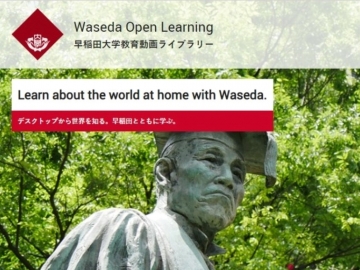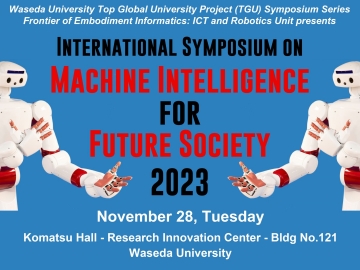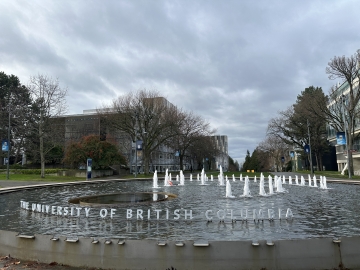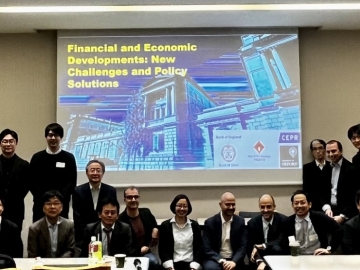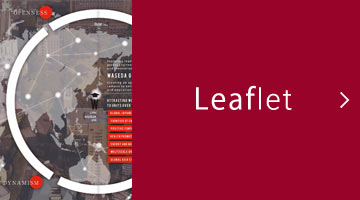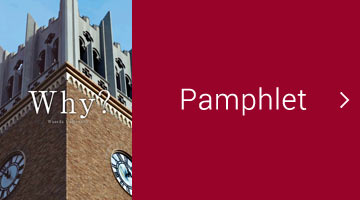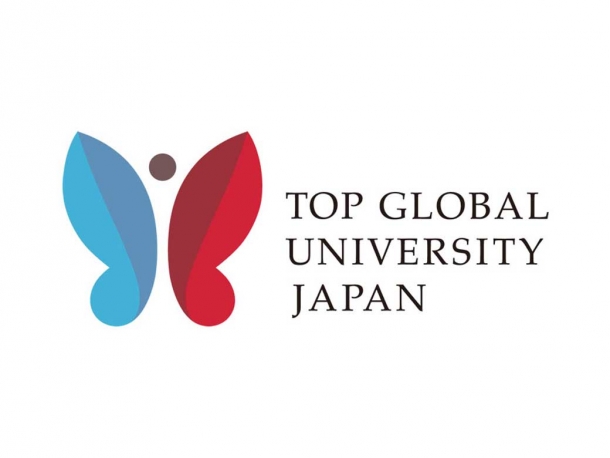ICPSR (Inter-university Consortium for Political and Social Research), which owns the world’s largest archive of research data on social sciences, holds an annual summer program in Quantitative Methods of Social Research at the University of Michigan, where it is headquartered. The ICPSR Summer Program, which has continued since the 1960s, was held in person in Ann Arbor, Michigan, and also via Zoom this year, with four weeks of intensive lectures on more than 40 courses.
The Center for Positive/Empirical Analysis of Political Economy subsidizes its program fees every year for graduate students participating in this program. This year, with the Unit’s support, two graduate students from the Graduate School of Political Science and the Graduate School of Economics dived into this four-week program at the University of Michigan. Below is a student report on his experience from the second session.
ASO, Mitsuhito
Affiliation: M1, Graduate School of Political Science
Research interest:
Destination: The University of Michigan (7/17/2022 – 8/15/2022)
My name is Mitsuhito Aso. I am a first-year master’s student at the Graduate School of Political Science. I have spent much time acquiring the techniques of quantitative analysis since I entered graduate school, but I was still not confident about the field. So, I decided to attend the ICPSR summer seminar to get closer to quantitative thinking and experience graduate education in the U.S. The ICPSR is the University of Michigan (UM)’s historically significant research camp open for graduate students from different institutions to get access to cutting-edge U.S. graduate education, which continues for eight weeks with two sessions. I joined the second session.
Journey in the pandemic
All I had to do was the acquisition of the visa and the vaccination certificate thanks to the administrative staff who arranged the flights and the insurance. I had a bit of trouble with the vaccination certificate although I could easily get the ESTA. And, at that time the Japanese government required a PCR test before boarding for those who return to Japan, which was a bit of a hassle for me.
The reason why I had difficulty with the vaccine certificate was the fact that I do not have the my-number card, which enables Japanese citizens to get the certificate easily on the Internet. Nevertheless, I could get issued the certificate by going in-person to the office of a health center.
One thing that surprised me during the trip was the fact that almost no one was wearing masks at the Chicago O’Hare Airport, despite everyone wearing a mask before the take-off. It gave me a little weird feeling as this was my first time being outside of Japan since the pandemic began.
Classes
All classes were hybrid of face-to-face and online. Half of the participants attended face-to-face, and the other half joined online. As I mentioned, a few people wore masks in the U.S. This was also the case during the classes, but it does not mean no one wears a mask. The ICPSR staff advised wearing it and prepared new N95 masks in each classroom. Some thoughtful instructors wore masks when they got closer to students to hear their questions.
The ICPSR classes consist of workshops and lectures. The workshops were the main characteristic of the ICPSR, at least one of which every single participant takes. A workshop takes two hours and continues for four weeks. This demanding curriculum helps participants to understand quantitative methods. On the other hand, the lectures were a free choice of the participants because they aimed just to screen the fundamental topics. Lectures continue only for two weeks, and most of them take shorter.
I participated in the second session. I took two workshops (“Panel Data and Longitudinal Analysis” and “Regression Analysis II: Linear Models”) and two lectures (“Introductory/Review Lectures on Matrix Algebra” and “Introduction to the R Statistical Computing Environment”).
The “Panel Data and Longitudinal Analysis” workshop was hosted by Professor Andrew Philips of the University of Colorado Boulder and Professor Mark Pickup of Simon Fraser University. Andrew taught the first two weeks, and Mark did the rest. Their explanations were based on matrix algebra, which I had been foreign to. It suffered me to catch up with the topics, but they carefully prepared classes such as the lab sessions using the R and Stata codes, which helped me understand analytical methods and test statistics.
The “Regression Analysis II” workshop was taught by Professor Brian Pollins of Ohio State University and Professor Robert Cooper of Dartmouth College. Mainly Brian taught the classes, and Robert helped with technical issues about online sessions. Brian had a sense of humor and taught the theoretical fundamentals of regression analysis with many jokes. Brian was very much a veteran, and his handouts of the lecture impressed me with the history of the ICPSR. This was natural because later I learned Professor Tago was his student 20 years ago! His assignments which required me to compute regression without statistical software deepened my understanding of linear regression models.
The “Introductory/Review Lectures on Matrix Algebra” was instructed by Professor Timothy McDaniel of Buena Vista University. Tim was so cheerful to encourage the participants to catch up with the fundamental vocabulary of matrix algebra. The lecture “Introduction to the R Statistical Computing Environment” was hosted by Professor Sarah Hunter of the University of Colorado Boulder. Sarah’s explanation was so careful and delicate in detail that participants can endeavor into the R environment. Her lecture was aligned with her R markdown data which was full of tips against frequent errors R users should face.
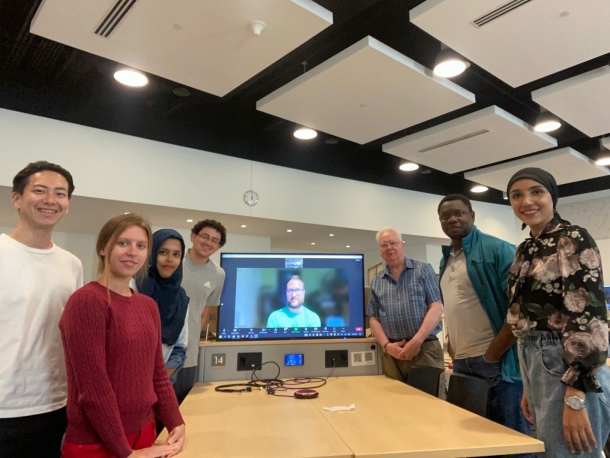
Brian and Robert’s regression workshop
Both the workshops and the lectures were held in a lot of places around the huge campus. I walked long distances because I took many courses, but it allowed me to explore the campus, which left me with a lot of findings.
Life at the University of Michigan

The Osterweil, where I stayed
I stayed at a house run by the ICC, the Inter-Cooperative Council at Ann Arbor, which my friends (past participants) told me about before I flew there. The ICC runs 16 houses around the campus, and students use each house like dorms. I stayed at a house called “Osterweil” which was close to the campus.
On weekdays, I often had breakfast at home with bread bought at Target and worked with the assignments at the ICPSR headquarters outskirt of the campus. I spent busy times because I had the matrix lecture from 12:00 to 13:00, the two workshops from 13:00 to 17:00, and the R lecture from 17:30 to 19:30. The ICPSR headquarter was open for all the participants and had tables and sofas for research. Also, we could drink coffee or tea by ourselves. The headquarters had events including the working lunch on Tuesday and the donut break on Wednesday morning, which was a good opportunity for social interaction among participants and TAs. I often spent time with other participants at the headquarters. After the classes, I often went to restaurants since someone invited others almost every day.
On weekends, I enjoyed the atmosphere of Ann Arbor, where the UM stands. Especially, on the first and last Saturdays, the ICPSR held picnics in a near park for the interaction of the participants. The event definitely tightened the distance between the participants. On another day, my friends who are doctoral students in the US visited me, and we drove around the city. On other days, I worked on the assignments and research at the ICPSR headquarters with other participants.

The ICPSR headquarters, where coffee and donuts were served
To the Future
I could experience a lot of things through the program. My understanding of the regression analysis was deepened with Brian’s thorough workshop, and Andrew and Mark’s panel data workshop shed the light on the way that I should cope with it.
Since I attended the program physically, I could experience the graduate education of the U.S. throughout my body. (I had never imagined that students call their instructors or professors just by their names!) Also, I had an opportunity to communicate with other fellow students from all over the world. I tried hard to talk to them because Professor Naoi advised me before I joined the program, which paved the way to fruit the four weeks at the UM. The fact that most of the other participants were doctoral students showed me the wall that now I am facing and have to get over. I would like to open a path to academism with this experience.
Finally, I would like to thank all the staff and professors who gave me such a great opportunity.

A group photo of the participants
